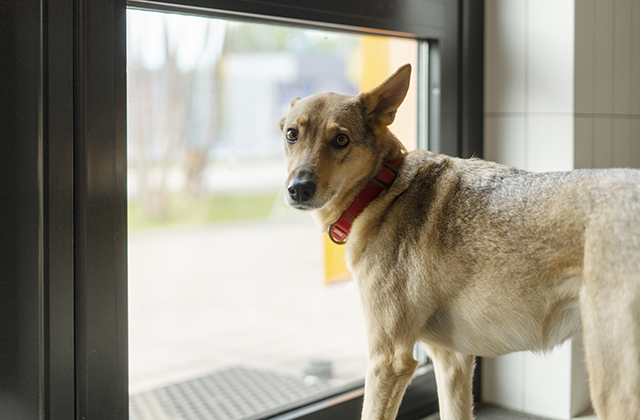As winter approaches, pet owners must consider not only their comfort but also the well-being of their furry friends. Ensuring that your home remains warm while providing your pet easy access to the outdoors can be a challenge, especially when you have a dog door. Winterizing and insulating your dog door is crucial to maintain a cozy home environment and keep energy bills manageable. Here are expert tips to help you achieve this balance, with a special focus on Sydney pet doors.
Understanding the Importance of Winterizing Your Dog Door
Dog doors are incredibly convenient, allowing your pet the freedom to come and go as they please. However, they can also be a significant source of heat loss during the colder months. Poorly insulated dog doors can let in drafts, snow, and rain, leading to higher heating costs and uncomfortable indoor temperatures. Winterizing your dog door ensures that your pet can continue to enjoy their freedom without compromising the warmth of your home.
Selecting the Right Dog Door
Before diving into insulation techniques, it’s essential to choose a dog door designed for energy efficiency. Brands like Sydney pet doors offer various options that are specifically engineered to minimize heat loss. Look for features such as:
- Double Flaps: These create an air pocket that serves as an insulator, reducing the transfer of cold air.
- Magnetic Seals: Strong magnets ensure that the flaps close tightly, preventing drafts.
- Weather Stripping: High-quality weather stripping around the edges of the door further blocks cold air.
DIY Insulation Tips for Existing Dog Doors
If you already have a dog door installed and are looking to improve its insulation, here are some practical tips:
1. Install an Insulated Dog Door Cover
An insulated dog door cover is a simple yet effective way to reduce heat loss. These covers can be placed over the door when it’s not in use, adding an extra layer of protection against the cold. Look for covers made from materials like heavy-duty plastic or thermal fabric.
2. Use Weather Stripping
Weather stripping is an affordable solution that can make a big difference. Apply adhesive-backed weather stripping around the frame of the dog door to seal any gaps where cold air might enter. For best results, choose weather stripping designed for extreme temperatures.
3. Add a Door Sweep
A door sweep attached to the bottom of the dog door can help block drafts. This is especially useful if there’s a noticeable gap between the door and the floor. Ensure the sweep is durable and flexible enough to withstand regular use by your pet.
4. Apply Insulating Foam Tape
Insulating foam tape is another excellent option for sealing gaps. It’s easy to apply and can be used in conjunction with weather stripping for added insulation. Place the foam tape around the edges of the door frame to create a tight seal.
Advanced Insulation Solutions
For pet owners looking for more advanced solutions, consider these options:
1. Install a Double-Flap Dog Door
Upgrading to a double-flap dog door can significantly enhance insulation. The two flaps create a buffer zone that traps air and reduces heat exchange. This type of door is particularly beneficial in regions with harsh winters.
2. Use a Magnetic Closure System
Dog doors with magnetic closures ensure a secure fit, preventing the flaps from being blown open by strong winds. This system helps maintain a consistent indoor temperature, even on the coldest days.
3. Integrate a Vestibule
Creating a small vestibule around the dog door can serve as an additional barrier against the cold. This can be as simple as placing a dog house or a small enclosure on the outside, which your pet enters before passing through the actual door. This extra space helps to reduce the amount of cold air entering directly into your home.
Maintaining Your Insulated Dog Door
Once you’ve winterized your dog door, regular maintenance is key to ensuring it remains effective throughout the season:
- Check Seals and Stripping: Periodically inspect the weather stripping and seals to ensure they are still intact and functional. Replace any worn-out materials as needed.
- Clean the Flaps: Dirt and debris can prevent the flaps from sealing properly. Keep them clean to maintain a tight closure.
- Monitor for Wear and Tear: Regularly check for any signs of wear and tear, especially in high-traffic areas. Address any issues promptly to prevent drafts.
Conclusion
Winterizing and insulating your dog door is essential for maintaining a warm and energy-efficient home during the colder months. By following these expert tips and choosing high-quality products like those offered by Sydney pet doors, you can ensure that your pet stays comfortable while keeping your energy bills in check. With a little effort and the right materials, you can create a cozy environment for both you and your furry friend all winter long. Contact us on how to insulate your dog door.

